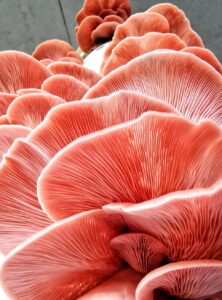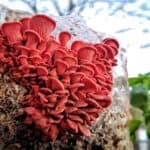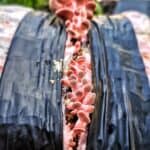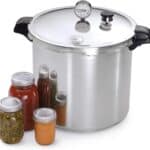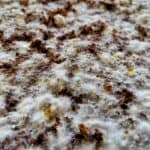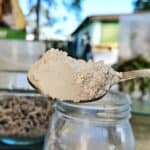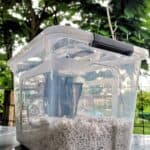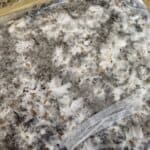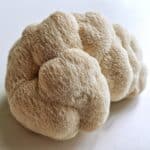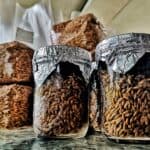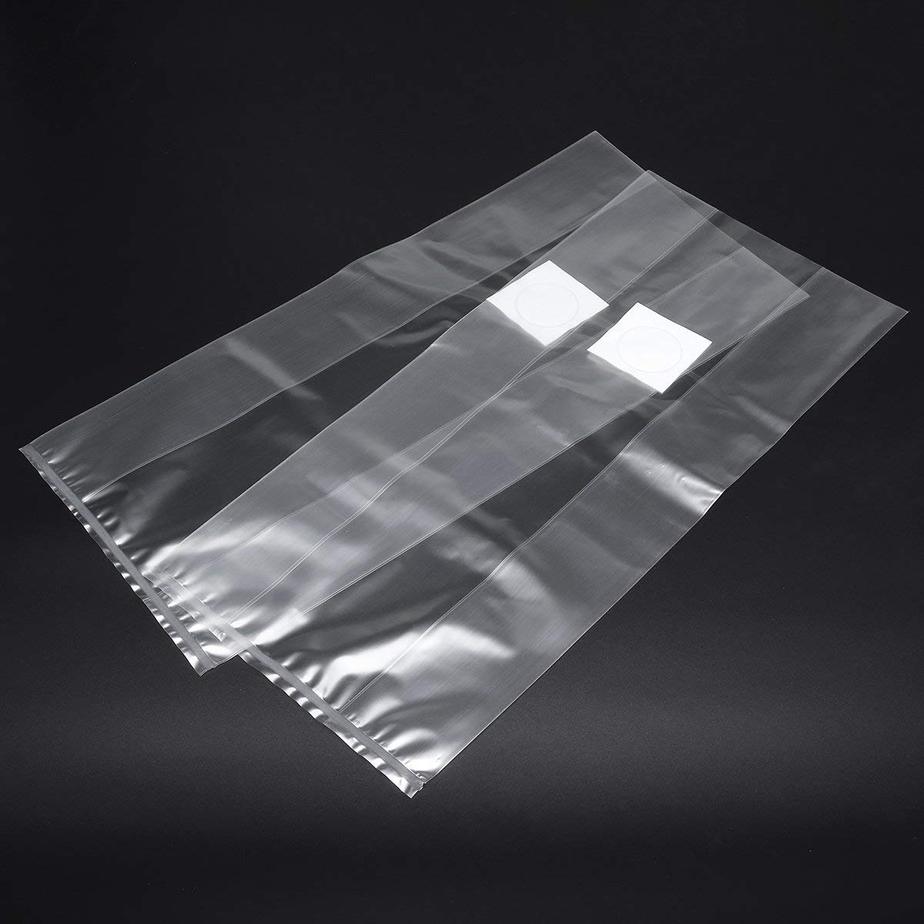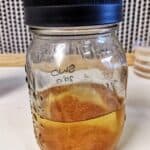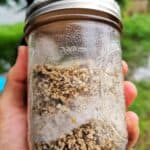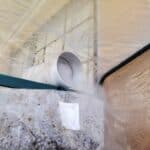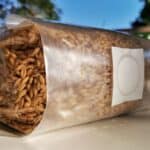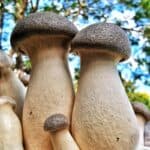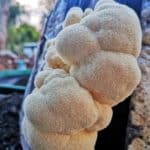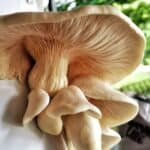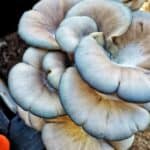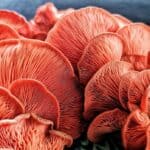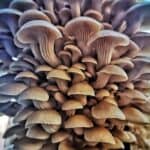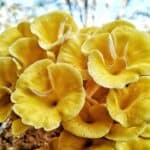Free Shipping On All Orders
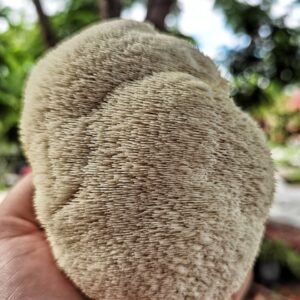
What Is Lion's Mane
Lion’s mane, also known as hericium erinaceus belongs to the genus of edible mushrooms that are commonly eaten around the world.
Hericium erinaceus has recently garnered a lot of attention due to its potential therapeutic uses. A number of studies focusing on the mushroom’s effect on nerve growth factor have been the source of great interest demonstrating the potential for use to treat degenerative brain disorders such as Parkinsons, Alzheimers, Dementia and ALS. More research is yet to come to confirm its efficacy in in-vivo human studies
Workflow
Lion’s mane can successfully fruited on a hardwood substrate. In this guide we will be fruiting the lion’s mane from a hardwood fruiting block supplemented with soy hulls.
The hardwood substrate mixture is inoculated with lion’s mane grain spawn that has been grown on sterilised whole oats also known as race oats.
The sterilised whole oats are inoculated with a wedge of lion’s mane culture grown on agar.
Each step of this procedure is undertaken while adhering to aseptic technique with the aide of a flow hood.
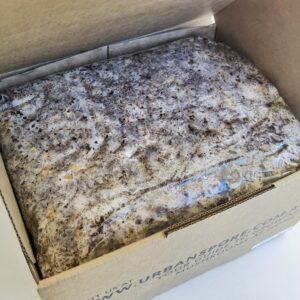
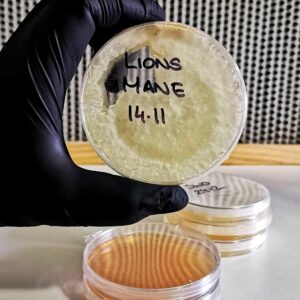
Lion's Mane On Agar
Lion’s mane mycelium can be grown on agar to produce segments of clean mycelium culture for use in the production of grain spawn or liquid culture.
The lion’s mane culture can be grown from a live tissue clone, liquid culture, grain spawn, lion’s mane spores or an existing agar culture. Multiple transfers can be made to ensure that the agar culture is free from contamination.
Lion’s mane culture will fully colonise an agar plate within 2 – 3 weeks. The mycelium is often finer than other species. In-vitro fruiting may occur.
Lion's Mane Grain Spawn
Lion’s mane grain spawn has a distinctive appearance. It is often much finer than other species and can be easily overlooked when grown for the first time. The fine almost transparent mycelium will begin to turn opaque where it makes most contact with fresh air, this is indicative of it preparing to form primordia.
Lion’s mane grain spawn can be produced by inoculating sterilised grains with an agar culture, liquid culture or fully colonised grain spawn.
The development of lion’s mane spawn can vary depending on the inoculant. Agar can require 3 – 5 weeks for full colonisation. Liquid culture can require 2 – 3 weeks for full colonisation. Grain spawn cultures can require 2 – 3 weeks for full colonisation.
Shaking a partially colonised bag will disperse the mycelium encouraging faster growth. However this should be done sparingly, no more than twice during colonisation to avoid mycelial fatigue.
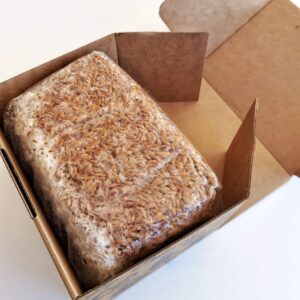
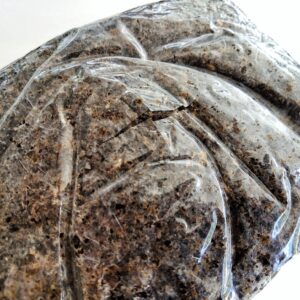
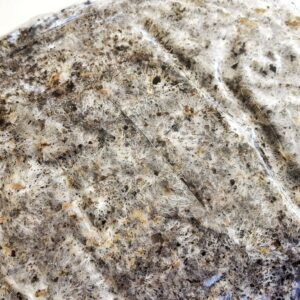
Colonising Lion's Mane Fruiting Block
Lion’s mane mycelium can be difficult to identify at first glance when grown on a hardwood fruiting block. Its semi-transparent fibres branch out across the block as it slightly and gradually lightens in tone.
The mycelium will change formation and grow noticeably white and opaque where it makes most contact with fresh air. Often this results in a layer of primordia across the top of the block.
Lion’s mane will require 10 – 16 days to fully colonise a supplemented hardwood substrate.
Please note: Unsupplemented substrates may require additional time and will often fruit before fully colonising.
Free Delivery With Every Order
Free standard delivery is included with every order. All deliveries are lodged via Australia Post.
Products listed available and in stock will be dispatched within 48 hours.
Flat rate express delivery is available with next day dispatch for any order placed before midnight 12 am.
Express post is recommended for placing interstate orders during the summer months to avoid delay and ensure freshness.
Back order – Any items on back order will be dispatched separately. Items on back order are anticipated to be fulfilled within 21 days unless stated otherwise.
Forming Lion's Mane Primordia
Once fully colonised the lion’s mane fruiting block can be opened to expose substrate to fresh air and humidity which will assist in triggering the formation of primordia.
Lion’s mane primordia will ideally form at temperatures below 22 degrees Celsius however they will often form at higher temperature providing that evening temperatures are below 22 degrees.
A small opening can either be made where the substrate appears darker or on top where the substrate has begun to whiten and form a layer or primordia.
Applying tape to restrict airflow can ensure that the mushrooms grows through the hole towards the fresh air. Smaller openings will often produce larger, rounder more aesthetically pleasing fruits.
Lion’s mane can be either top or side-fruited. We recommend positioning the block to fruit from the side for best air flow.
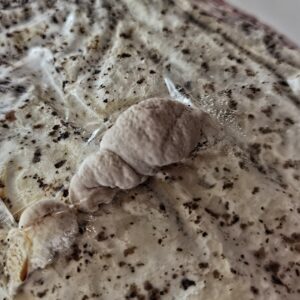
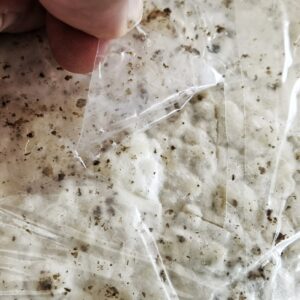
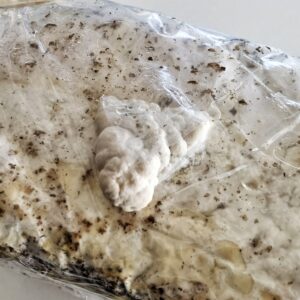
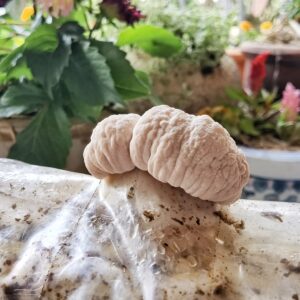
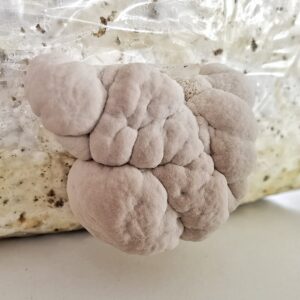

The Developing Lion's Mane Fruiting Body
Fruiting conditions revolve around humidity & fresh air exchange.
Humidity needs to be kept high to allow the mushrooms to grow large & healthy. Dry, cracked & leathery & discoloured mushrooms often indicate a need to increase humidity. Humidity can be increased via indirect misting or the use of a humidifier or simple fruiting chamber.
Fresh air exchange refers to the amount of fresh air moving around the grow kit. Mushrooms will exhale carbon dioxide which can accumulate within the fruiting. Mushrooms growing long, stretched and deformed often indicate a need to increase the amount of fresh air exchange.
Please note that increasing fresh air exchange can often directly reduce humidity. Follow the link below to learn more about making a low cost fruiting chamber for maintaining optimum fruiting conditions.
Fully Mature Lion's Mane
The lion’s mane fruit may require up to 2 weeks to fully mature. This may vary depending on temperature and humidity. Ideally the fruits will be picked before the spine completely form and descend. This will reduce the quantity of spores released and allow for maximum shelf life.
We recommend storing the freshly harvested mushroom in a paper bag within the fridge to prevent it from drying out. It should be eaten within 3 – 4 days from harvesting.
Always pay attention for signs of decomposition of the mushroom before cooking. The lion’s mane mushroom will have a strong, earthy mushroom aroma. Yellowing may occur due to dehydration of the mushroom.
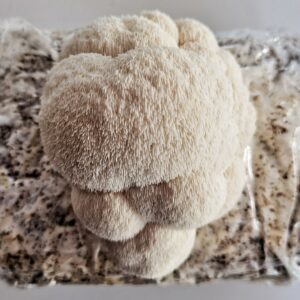
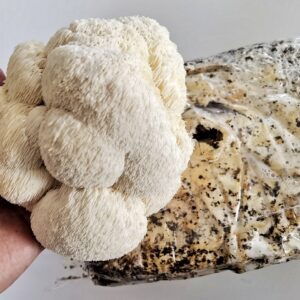
View Our Series Of Grow Guides
Who We Are
We’re a small scale producer of gourmet mushroom grain spawn and ready to grow kits located in South East Queensland. We’re passionate about fungi and we love sharing our obsession with the world.
Frequently Asked Questions
Do you have questions for us? We might have answered your question in our Frequently Asked Questions.
